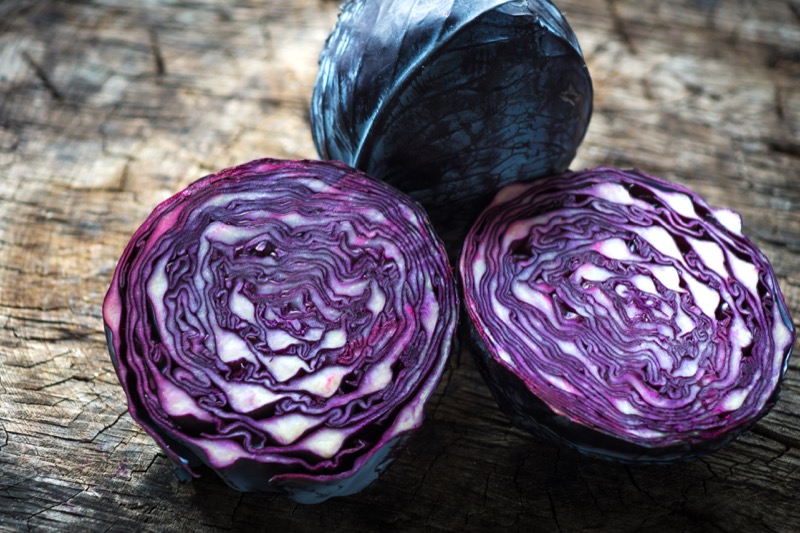Our Boxes
| Vegetables
| Fruit
| Salad
| Drinks
| Meats
| Fish
| Dairy
| Cheese
Bakery | Herbs | Other Bits | Snacks | Seasonings | Oils
Bakery | Herbs | Other Bits | Snacks | Seasonings | Oils
Cabbage - Red

The red cabbage is a kind of cabbage, also known as purple cabbage, red kraut, or blue kraut after preparation. Its leaves are coloured dark red/purple. However, the plant changes its colour according to the pH value of the soil, due to a pigment belonging to anthocyanins. In acidic soils, the leaves grow more reddish, in neutral soils they will grow more purple, while an alkaline soil will produce rather greenish-yellow coloured cabbages. This explains the fact that the same plant is known by different colours in various regions. Furthermore, the juice of red cabbage can be used as a home-made pH indicator, turning red in acid and green/yellow in basic solutions. It can be found in all Europe, throughout the Americas, in China and especially in Africa. On cooking, red cabbage will normally turn blue. To retain the red colour it is necessary to add vinegar or acidic fruit to the pot.
Nutrition:
Red cabbage packs a more powerful nutritional punch overall. Per serving, it delivers 10 times the amount of vitamin A, nearly 50 percent more vitamin C and potassium, and double the amount of iron.
Storage:
Keep your cabbage whole until you plan to use it. When you cut cabbage in half, it begins to lose its vitamin C. If you absolutely must store half of a cabbage, wrap it tightly in plastic wrap and store it in the refrigerator for up to two days
Source:
Most of the veg is sourced as locally as possible, due to seasonal restrictions and availability and from South West Markets and producers.


